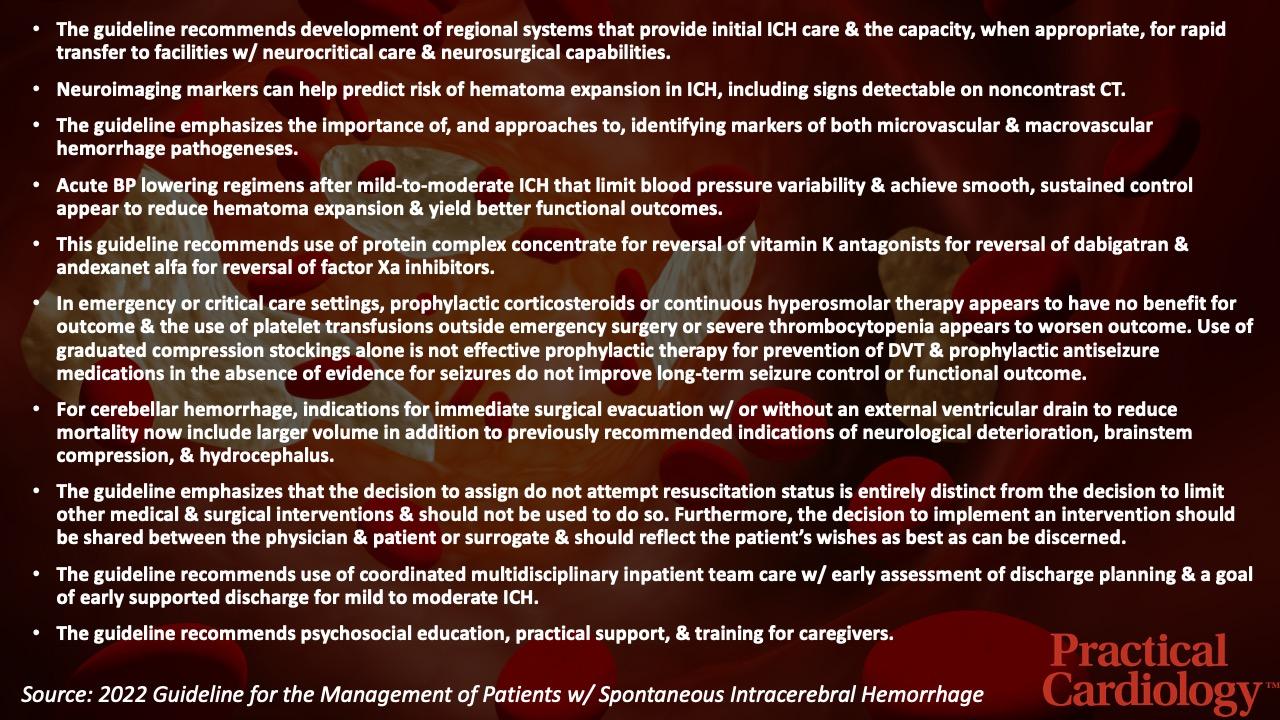American Heart, Stroke Associations Release Updated Guidance for Intracerebral Hemorrhage
Published on May 17, the 2022 AHA/ASA guidelines for the management of intracerebral hemorrhage were created with the intent of replacing 2015 guidance with updated evidence-based recommendations.
Steven Greenberg, MD, PhD

A new set of guidelines from the American Heart Association (AHA) provides clinicians with refined recommendations for management of intracerebral hemorrhages (ICH).
Published on May 17 in collaboration with the American Stroke Association (ASA), the new guidelines provide evidence-based recommendations the organizations hope will replace their most recent guidelines published, which were published in 2015.
“Advances have been made in an array of fields related to ICH, including the organization of regional health care systems, reversal of the negative effects of blood thinners, minimally invasive surgical procedures and the underlying disease in small blood vessels,” said guideline writing group chair Steven M. Greenberg, MD, PhD, a professor of neurology at Harvard Medical School and vice chair of neurology at Massachusetts General Hospital, both in Boston, in a statement.
Prepared by a volunteer writing group on behalf of the AHA and ASA, the 80-page document is broken down into 9 sections with multiple subsections and cites 649 reference documents. The first update to ICH guidance from the AHA/ASA since their 2015 recommendations, the 9 sections within the guideline are an introduction, general concepts in ICH, organization of prehospital and initial systems of care, diagnosis and assessment, medical and neurointensive treatment for ICH, surgical interventions, outcome prediction and goals of care, prevention, and recovery, rehabilitation, and complications.
Within these 9 sections are significant changes from previous guidance. These include clarification around the lack of benefit seen with compression socks or stockings of any length to prevent deep vein thrombosis, recommendations for use of intermittent pneumatic compression, and updated recommendations for the use of anti-seizure medicines or antidepressants after ICH. Specifically, the guidelines recommend neither of these classes of medications to be used unless a seizure or depression is already present, therefore, they are not advised for most people.
Guideline authors pointed out the guideline had received endorsement from the American Association of Neurological Surgeons, Congress of Neurological Surgeons, the Society of Vascular and Interventional Neurology, and the Critical Care Society. Additionally, the American Academy of Neurology affirmed the value of this statement as an educational tool for neurologists.To open the guidelines, authors highlighted a list of 10 top take-home messages they chose to highlight from within the new guidelines. An abbreviated version of these messages can be found below.
Summary of Take-Home Messages from 2022 AHA/ASA Guideline for the Management of Patients w/ Spontaneous Intracerebral Hemorrhage.

“There is no easy path to preventing or curing bleeding strokes, yet there is encouraging progress across all aspects of this disease, from prevention to in-hospital treatment and post-hospital recovery. We believe the wide range of knowledge set forth in the new guideline will translate into meaningful improvements in ICH care,” Greenberg added, in the aforementioned statement.
This article, “2022 Guideline for the Management of Patients With Spontaneous Intracerebral Hemorrhage: A Guideline From the American Heart Association/American Stroke Association,” was published in Stroke.